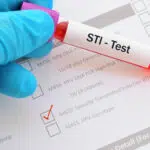STI Awareness Month is a special interest holiday observed in April. Its goal is to sensitize and educate people on sexually transmitted infections (S.T.I.’s). S.T.I.s are common medical issues, yet many people don’t know they’re infected because they have mild symptoms that are easily overlooked or no symptoms at all. Those who have undiagnosed, untreated S.T.I.s contribute to transmission within the community. They may also lead to further complications in the infected person. STI Awareness Month draws attention to this by encouraging safe sex practices and teaching others about the importance of regular S.T.I. testing.
History of STI Awareness Month
Sexually transmitted infections have been around for centuries. Due to a lack of knowledge and understanding, they became widespread and there was no effective medical treatment for them. The first recorded case of syphilis occurred in 1495 when it struck French troops stationed in Italy. From there, the S.T.I. spread across Europe at an unprecedented rate. Syphilis was heavily stigmatized because it was thought to be a disgraceful disease that only affected the sexually immoral. Citizens in neighboring France quickly named it the ‘French disease,’ while the French blamed the Italians, naming it the ‘Neapolitan disease.’ The Turks took it one step further, naming it the ‘Christian disease.’
It would take many years for the stigma around S.T.I.s to die down, which opened the doors for the scientific approach. During the 18th and 19th centuries, S.T.I.s, or venereal diseases, as they were known back then, were treated with arsenic, mercury, and sulfur. Because there was still a lack of comprehensive understanding of how S.T.I.s worked, these methods of treatment frequently had negative side effects on patients. Many people died as a result of mercury poisoning and other complications.
In 1913, a common method of treatment for gonorrhea was heat therapy, but it became obsolete with the introduction of sulfonamides in the 1940s. The development of antibiotics such as penicillin in the 20th century led to advances in the treatment of bacterial S.T.I.s. As people realized that S.T.I.s were treatable, the stigma began to fade, but this had the unintended consequence of increasing sexual promiscuity. S.T.I.s were no longer regarded as a threat by the general public. By the late 1980s, H.I.V. had become a serious pandemic, forever altering the conversation about S.T.I.s. To address this, global health organizations made significant efforts. STI Awareness Month is one product of these efforts.
STI Awareness Month timeline
The London Lock Hospital becomes the first of its kind to specialize in treating venereal diseases.
Arsphenamine, also known as salvarsan, is introduced as the first effective syphilis treatment.
Following reports of a dramatic reduction in infection in patients given this antibiotic, doctors begin widespread use of penicillin to treat syphilis.
A 35-year-old man becomes the first AIDS patient to be admitted to the National Institutes of Health Clinical Center.
The C.D.C. in the United States revises its definition of AIDS to state that the disease is caused by a newly discovered virus, and guidelines for blood screening to test for it are issued.
The C.D.C. implements an HIV prevention counseling model that focuses on the patient rather than the disease.
The H.I.V. travel and immigration ban in the United States is officially lifted.
The U.S. Preventive Services Task Force issues new recommendations for HIV prevention and screening, including screening for adolescents and providing PrEP to people at high risk of HIV.
STI Awareness Month FAQs
When did we start saying ‘S.T.I.’ instead of ‘S.T.D.?’
Healthcare organizations and some doctors stopped using S.T.D. around 2013, switching to S.T.I. instead, because not all diseases begin with infections.
Why is chlamydia called ‘clap?’
The term ‘clap’ is a reference to the outdated clapping method of treatment, which was used to remove discharge from the patient’s penis.
Why is gonorrhea called ‘the drip?’
A common symptom of gonorrhea is a slimy discharge that may ooze or drip from the genitals of infected persons.
How to Observe STI Awareness Month
Get involved in youth sex education
Half of all new S.T.I.s are discovered in people aged 15 to 24. Educating the youth and encouraging them to engage in safe sex is an excellent way to reduce the spread of sexually transmitted infections in the community. Reach out to teenagers and young adults during STI Awareness Month to have a conversation about reproductive health.
Educate yourself on S.T.I.s
Learn more about S.T.I.s, how they're transmitted, and how they're treated. Some S.T.I.s have developed resistance to traditional treatment methods. In other cases, scientists are on the verge of developing a cure or a more effective treatment method. It never hurts to keep up with these developments for one month out of the year.
Contribute to an S.T.I. organization
Some foundations and organizations focus on S.T.I. education, testing, and treatment. Participate in one in your area during STI Awareness Month. Contributions can take the form of cash donations, fundraising assistance, community outreach programs, or volunteering your time to raise S.T.I. awareness.
5 Important Facts About S.T.I.s
Protection sometimes fails
Not even condoms offer 100% protection from S.T.I.s, all the more reason to get tested regularly and be discerning with your partners.
There are millions of cases every year
The U.S. gets about 20 million new S.T.I. cases each year, adding up to $16 billion in medical costs.
Intercourse isn’t the only S.T.I. spreader
Anal sex, oral sex, and mutual masturbation may also spread S.T.I.s, including cancer-causing viruses like H.P.V.
Some S.T.I.s affect fertility
If left untreated, S.T.I.s such as chlamydia and gonorrhea can cause infertility or pelvic inflammation.
They’re becoming common in the elderly
Because they are past their childbearing years and many no longer practice safe sex, more elderly people are contracting S.T.I.s.
Why STI Awareness Month is Important
It teaches others to be more responsible
STI Awareness Month teaches others how to prevent the spread of infections. This way, more people learn to be responsible for their sexual health. They practice safe sex by using protection.
It encourages regular S.T.I. testing
One of the messages delivered during STI Awareness Month is the importance of getting tested regularly. When people get tested for S.T.I.s, they have more options in terms of treatment and management of the infection.
It corrects the stigma and misinformation
Even in this day and age, many people remain ignorant or misinformed about S.T.I.s. Others may have outdated notions or a biased way of thinking when it comes to S.T.I.s. During STI Awareness Month people have access to accurate reproductive health information from credible sources.
STI Awareness Month dates
| Year | Date | Day |
|---|---|---|
| 2026 | April 1 | Wednesday |
| 2027 | April 1 | Thursday |
| 2028 | April 1 | Saturday |
| 2029 | April 1 | Sunday |
| 2030 | April 1 | Monday |






















































































































































